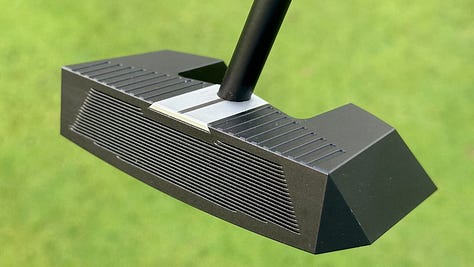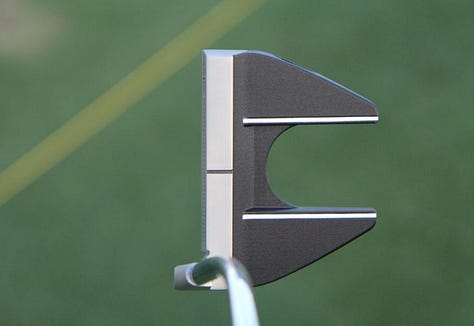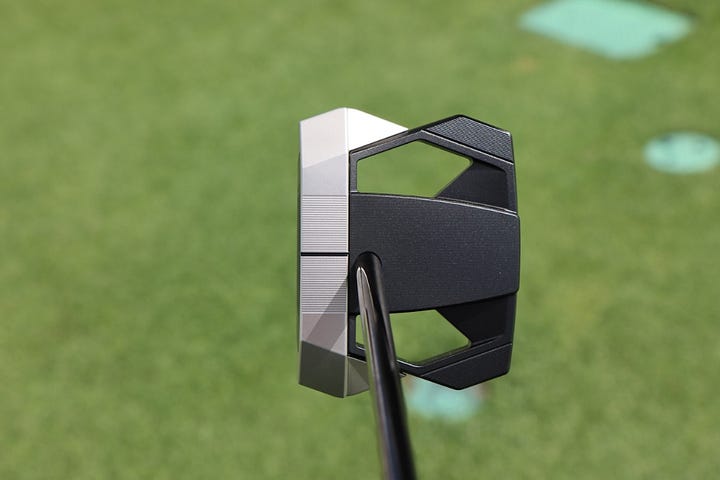The Science and Strategy Behind Zero Torque Putters
Why the future of putting might have no twist at all
Putting has always been the great equalizer in golf. Whether you're a weekend warrior or a PGA Tour phenom, the flat stick can either elevate your scorecard or break your spirit. But in recent years, an engineering innovation has quietly crept into tour bags and simulator bays: zero torque putters.
What exactly is a zero torque putter, and why are players like Adam Scott and Lucas Glover trusting them on the biggest stages? We’re diving deep into the history, mechanics, and movement behind one of golf's most disruptive technologies.
What Is Torque in a Putter?
Torque refers to the rotational force that a putter head exerts during the stroke—especially if the face is not perfectly square at impact. Traditional putters with toe hang or even face-balanced designs still rotate slightly during the stroke, requiring the golfer to “time” the face square at impact.
This is where zero torque comes in. These putters are designed to eliminate any twisting of the face throughout the stroke, especially through the transition from backswing to impact. The result? A more stable face, leading to more consistent roll and direction—even on mishits.
According to LAB Golf, "Zero torque putters reduce face angle variability by over 50% compared to conventional putters" — based on internal robotic testing.
How Do Zero Torque Putters Work?
Zero torque putters achieve their stability through shaft alignment and mass distribution.
The shaft is often center-shafted or positioned toward the middle of the head to create equilibrium
Some models feature Lie Angle Balance (LAB) technology, which aligns the center of mass perfectly with the shaft axis
Unlike conventional putters that naturally rotate open on the backswing and closed on the follow-through, these putters stay “square” to the arc of the stroke
A Brief History: From Gimmick to Game-Changer
The concept of face stability isn’t new—engineers have long experimented with shaft alignment to improve forgiveness. But the zero torque movement gained traction with the introduction of LAB Golf's Directed Force 2.1 in 2016.
Originally seen as an oddity because of its “alien” shape, the performance spoke for itself. When Adam Scott—one of the most aesthetically driven players on tour—put it into play, people started paying attention.
Since then, other brands have followed suit:
Axis1 Golf (used by Justin Rose)
Evnroll (Zero Torque Tour series)
Toulon Garage (with modified necks for torque balance)
TaylorMade (Spider 5K series with refined face stability)
Callaway/Odyssey (New Ai Square to Square models)
Models to Know
LAB Golf MEZZ.1 Max
Sleek, high-MOI design with Lie Angle Balance tech
Used by Adam Scott, Lucas Glover
Price: ~$469
Axis1 Rose
Developed with Justin Rose
Patented heel-toe weight and shaft alignment for torque-free release
Price: ~$449
Evnroll Zero Torque Tour
Face-balanced milled putters with built-in torque correction
Grooved face for distance control
Price: ~$400
TaylorMade Spider 5k-ZT
Features perimeter weighting and deep CG to limit face rotation
Face-balanced to promote square alignment throughout stroke
Price: ~$449
Odyssey Ai-One Square to Square Max
Torque control optimized via AI-designed face inserts
Consistent ball speeds and directional stability on off-center hits
Price: ~$399





Data Breakdown: Does It Really Help?
Let’s compare performance over short putts (3–10 ft), where torque plays the most significant role:
The key stat is the face angle variance, which directly affects the line of the putt. Even a 1° error can lead to a miss from 6 feet.
Who’s Using Them on Tour?
Adam Scott – LAB MEZZ.1 Max Broomstick Style
Lucas Glover – Switched in 2023, won back-to-back PGA Tour events using the LAB MEZZ.1 Max
Justin Rose – Recently switched into TaylorMade 5k-ZT
Bryson DeChambeau – Tested torque-free models during LIV Golf 2023 season
Will Zalatoris – Uses L.A.B. Mezz.1 Max Broomstick-style
Rickie Fowler – Reported testing zero torque prototypes, including custom designs with limited release
Gary Woodland – Used a Scotty Cameron zero torque prototype
Brian Harman – Plays the TaylorMade Spider 5K ZT
While adoption is still limited, the trend is growing—especially among players known for ball-striking over putting. The consistency provided by zero torque allows them to putt with less manipulation and more confidence.
Pros and Cons
Pros
Increased face stability through the stroke
Reduced miss-hit dispersion
Less reliance on “handsy” timing
Great for players with inconsistent face control
Cons
Some models have unusual aesthetics
Limited feel feedback compared to traditional blades
Higher price point
Final Thoughts: A Quiet Revolution
Zero torque putters may not dominate shelves or commercials just yet, but they’re quietly reshaping the way golfers approach putting. For players who struggle with consistency or feel like they manipulate the face mid-stroke, this tech could offer a measurable edge.
Whether you’re a data-driven golf nerd or someone desperate to stop the 3-putts, it might be time to give torque-free tech a look.







